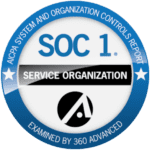Logistics is the backbone of any business that deals with physical products. Whether you’re a small e-commerce startup or a large multinational corporation, managing transportation efficiently can make or break your bottom line.
Enter the Transportation Management System (TMS)—a game-changer in the logistics landscape. But with an overwhelming array of options, how do you choose the best TMS for your business?
This blog post aims to guide you through the process of choosing the best Transportation Management System (TMS) for your business. We’ll explore the key features to look for, the benefits of a robust TMS, and how to implement one effectively.
What is a Transportation Management System?
Understanding what a TMS is and its role in your business operations is crucial. A TMS is a software solution designed to help businesses plan, execute, and optimize the physical movement of goods. It provides visibility into day-to-day transportation operations, trade compliance, and documentation, ensuring timely delivery of freight and goods.
Key Features of a TMS
A good TMS should offer a variety of features that streamline your logistics operations. These include route optimization, real-time tracking, and automated carrier selection. Advanced analytics and reporting capabilities are also essential for making data-driven decisions.
Why Your Business Needs a TMS
The benefits of a TMS extend beyond mere logistics management. It can significantly reduce operational costs, improve customer satisfaction, and enhance supply chain efficiency. By automating manual processes and providing real-time insights, a TMS empowers businesses to make informed decisions quickly.
How to Evaluate TMS Options
Choosing the right TMS involves careful evaluation of your business needs and the solutions available in the market. Here are some factors to consider:
Scalability and Flexibility
Your chosen TMS should be scalable to grow with your business and flexible enough to adapt to changing market conditions. Look for solutions that offer customizable features and integrations with other software systems you use.
User-Friendly Interface
A user-friendly interface is crucial for seamless adoption across your organization. The easier it is for your team to use the TMS, the quicker you’ll see a return on investment.
Cost and ROI
Evaluate the cost of the TMS against the potential return on investment. While some systems may have a higher upfront cost, they often provide greater long-term savings through improved efficiency and reduced operational costs.
Top TMS Solutions in the Market
TMS 2.0 from Hatfield and Associates
Hatfield and Associates have introduced TMS 2.0, a cutting-edge Transportation Management System tailored for businesses of all sizes. Known for its advanced technology and innovative features, TMS 2.0 offers unparalleled efficiency and flexibility.
This system is designed to integrate seamlessly with existing enterprise software, ensuring smooth operations across your entire supply chain. One of its standout features is its AI-driven route optimization, which continually improves delivery times and reduces fuel costs. Additionally, TMS 2.0 boasts a highly intuitive user interface, making it accessible for users at all levels of technical expertise.
With robust analytics tools, businesses can gain deeper insights into their logistics operations, enabling more strategic decision-making. Overall, TMS 2.0 from Hatfield and Associates is a powerful solution for any business looking to elevate their logistics management.
Implementing a TMS
Implementing a TMS requires careful planning and execution. Here are the steps to ensure a smooth implementation:
Assess Your Current Processes
Before implementing a TMS, assess your current transportation processes to identify areas that need improvement. This will help you tailor the TMS to meet your specific needs.
Choose the Right Vendor
Selecting the right vendor is crucial for a successful TMS implementation. Look for vendors with a proven track record, excellent customer support, and the ability to provide customized solutions.
Train Your Team
Proper training is essential for the successful adoption of a TMS. Ensure your team understands how to use the system effectively and can leverage its features to improve logistics operations.
Common Challenges and How to Overcome Them
Implementing a TMS is not without its challenges. Here are some common obstacles and how to overcome them:
Resistance to Change
Resistance to change is a common challenge when implementing new technology. To overcome this, involve key stakeholders in the decision-making process and provide comprehensive training to ensure buy-in from your team.
Integration Issues
Integrating a TMS with existing systems can be complex. Work closely with your vendor to ensure seamless integration and address any potential issues early in the process.
Data Accuracy
Accurate data is critical for the effective use of a TMS. Ensure your data is clean and up-to-date before implementing the system to avoid any discrepancies.
Future Trends in TMS
The world of logistics is constantly evolving, and so is the technology that supports it. Here are some future trends to watch out for in TMS:
AI and Machine Learning
AI and machine learning are set to revolutionize TMS by providing advanced predictive analytics and automation capabilities. These technologies will enable businesses to optimize their logistics operations further and make more informed decisions.
Blockchain Technology
Blockchain technology has the potential to enhance transparency and security in logistics operations. By providing a tamper-proof ledger of transactions, blockchain can help reduce fraud and improve traceability in the supply chain.
Internet of Things (IoT)
IoT devices provide real-time data on the status and location of goods in transit. Integrating IoT with a TMS can provide businesses with unprecedented visibility into their logistics operations, enabling more proactive management.
Conclusion
Choosing the best Transportation Management System for your business is a critical decision that can significantly impact your logistics operations and bottom line. By understanding the key features, benefits, and implementation steps, you can make an informed choice that meets your business needs.
Mastering logistics is no easy feat, but with the right TMS, you can streamline your operations, reduce costs, and improve customer satisfaction.
Looking to Optimize Your Logistics?
Take the first step today and transform your logistics operations with a comprehensive Transportation Management System from Hatfield and Associates.
Contact Hatfield & Associates LLC today. Our team of experts is dedicated to helping you streamline your operations, minimize losses, and enhance customer satisfaction through cutting-edge logistics solutions.
With our comprehensive approach, we guide you every step of the way, from understanding your rights and responsibilities to implementing technology that drives efficiency.
Use our TMS Software Checklist as a supply chain planning tool to match the right system with your needs.



